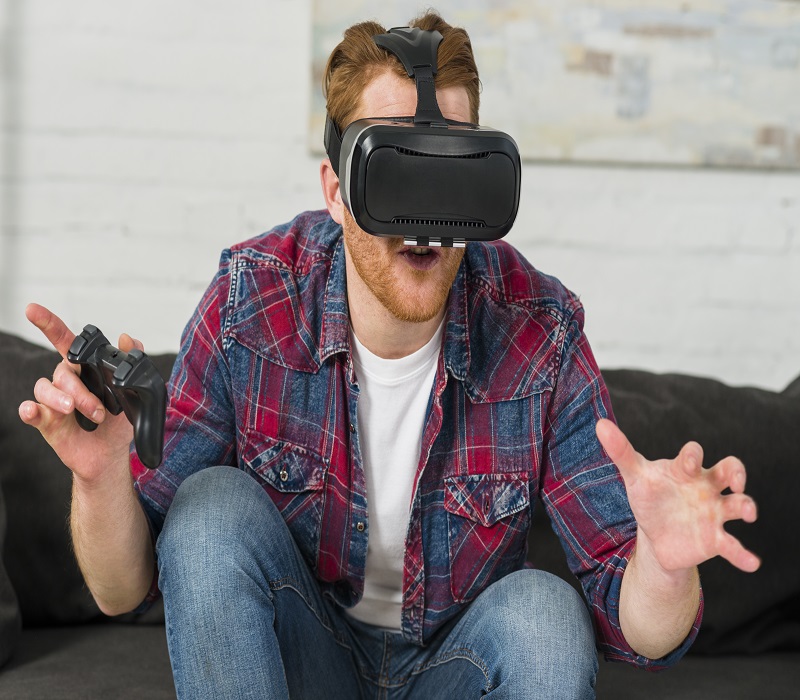The gaming world is buzzing with the name “Tommy Jacobs Consoles Eyecon.” But amidst the specs and promises, a crucial question remains: What does it actually feel like to use it, and how does it tangibly change the game for different users?
While other articles list its eye-tracking and 8K resolution, they often miss the real story. The Tommy Jacobs Consoles Eyecon isn’t just a new piece of hardware; it’s a fundamental shift in the philosophy of interactive design. It moves the player from being a controller of a game to an integral, connected part of the digital world.
This article cuts through the noise, offering a deep dive into the Eyecon’s practical impact for everyone—from someone picking up a controller for the first time to a developer building the next virtual universe.
Deconstructing the Eyecon – More Than a Gaming Console
At its core, the Tommy Jacobs Consoles Eyecon is a Context-Aware Interactive Platform. Traditional consoles process button presses. The Eyecon processes intent, attention, and environment.
- For Beginners: Think of it as a console that learns how you play. If you’re struggling with a jump puzzle, it might subtly make the platforms larger. If you’re lost in a story, it can guide your gaze toward a hidden clue. It’s a patient, adaptive tutor.
- For Educators & Trainers: This isn’t just for games. The Eyecon’s architecture is a breakthrough for simulation-based learning. It can track a student’s focus in a virtual lab, ensure a trainee pilot is scanning their instruments correctly, or provide real-time feedback in a medical procedure simulation.
- For Professionals & Developers: This is a new canvas. The Eyecon’s SDK (Software Development Kit) provides tools to build experiences that were previously science fiction, where user attention directly manipulates the environment and narrative.
The Feature Deep Dive – The “How” and “Why” Behind the Tech
Let’s move beyond the bullet points and explore the real-world application of the Eyecon’s flagship features.
1. Biometric Eye-Tracking: The Window to Player Intent
This is the soul of the Eyecon. It’s not just about where you look, but how you look.
- Dynamic Difficulty Adjustment: In a horror game, if the Eyecon detects you’re quickly looking away from a terrifying enemy, it might slightly reduce the enemy’s aggression. Conversely, if you’re staring intently at every detail, it might introduce more complex challenges. The game evolves with your comfort level.
- Revolutionary UI/UX: Menus can simply appear where you’re looking. In-game maps could be navigated with a glance. The clunky, multi-button navigation of traditional consoles becomes a thing of the past.
- Pro-Level Data Analytics: For esports professionals, the Eyecon provides post-match heatmaps of their gaze. Did they miss an enemy in their peripheral vision? Were they focusing too long on a single target? This data is a goldmine for coaching and self-improvement.
2. The “Adaptive Haptic” Ecosystem: Feeling the Game World
The Eyecon’s controller and optional haptic vest go far beyond simple rumbles.
- Contextual Feedback: If your character is tired in-game, the triggers can offer more resistance. If you’re gazing at a freezing virtual river, you might feel a gentle, cool vibration from the vest. This synesthesia of sight and touch is unparalleled.
- Accessibility Reimagined: For players with limited motor control, the combination of eye-tracking for aiming and nuanced haptics for environmental cues creates a rich, immersive experience that doesn’t rely solely on rapid thumb movements.
3. Seamless AR/VR Integration: Blurring Realities Consciously
The Eyecon doesn’t force a choice between AR and VR; it treats them as a spectrum.
- The “Mixed Reality” Playground: Imagine a strategy game where your living room floor becomes the map (AR), but when you lean in with your VR headset, you zoom into a unit’s first-person perspective. The transition is instant and intuitive.
- Educational Applications: History lessons can come alive with AR overlays of ancient Rome in a classroom, while VR mode allows for a full walkthrough of the Colosseum, with the Eyecon tracking which exhibits captivate a student’s attention the most.
The Ecosystem Impact – A New Dawn for Developers and Industries
The true test of a platform is the creativity it unleashes in others.
- The Indie Developer’s Dream: Small teams can now create deeply narrative-driven games where the story branches based on what the player notices, not just what they do. A single glance at a forgotten photograph can alter the entire plot.
- Corporate and Medical Training: Flight simulators can now fail a trainee for not performing the correct visual scan of the cockpit. Surgical simulators can track a novice surgeon’s focus, ensuring they are looking at the correct monitors and anatomy before making an incision. The stakes are real, and the Eyecon provides unforgiving, accurate feedback.
Tommy Jacobs Consoles Eyecon – Frequently Asked Questions (FAQs)
Q1: As a beginner, will the Eyecon be too complex for me?
A: Absolutely not. In fact, it’s designed to be the most beginner-friendly console. Its adaptive systems subtly assist you, reducing frustration. The intuitive, glance-based menus are easier to learn than complex button combinations.
Q2: I’m an educator. Is this just a expensive toy, or a real teaching tool?
A: It is a profound teaching tool. The ability to track a learner’s focus and engagement provides invaluable data that is impossible to gather in a traditional classroom or with a standard computer. It makes experiential learning truly measurable.
Q3: For a competitive gamer, is the eye-tracking an unfair advantage or a gimmick?
A: It is neither. It’s a new skill to master. In sanctioned esports, all players will use the same technology, leveling the playing field. The “meta” will evolve to include visual strategy and attention management, adding a thrilling new layer to professional play.
Q4: How does the console handle privacy with such sensitive biometric data?
A: Tommy Jacobs has stated that privacy is a cornerstone. All eye-tracking and biometric data can be processed locally on the console and is never required to be stored or transmitted to the cloud. Users will have granular control over what data is shared with developers.
Q5: Is the library of games strong enough to justify the investment?
A: The console launched with key exclusives built from the ground up for its technology. More importantly, its backward compatibility and powerful hardware ensure you have access to a vast existing library, all enhanced by the Eyecon’s superior load times and visual fidelity.
Conclusion: The Bridge to a More Human Digital Future
The Tommy Jacobs Consoles Eyecon is more than a winner in the spec wars. It is a paradigm shift. It represents a future where our technology understands not just our commands, but our context and our curiosity.
For the beginner, it’s a gateway to confidence and immersion. For the educator, it’s an unprecedented tool for engagement and assessment. For the professional and developer, it’s the next frontier of creative and competitive expression.
Disclaimer
This article is an independent, editorial analysis created for informational purposes. It is not an official source of information for the Tommy Jacobs Consoles Eyecon. All product features, specifications, and availability are subject to change by the manufacturer. The forward-looking statements and potential use-cases discussed are speculative and should be verified through official channels. The author and publisher are not liable for any decisions made based on the content of this article.




The Eyecon seems like a game-changer, especially with its ability to adapt to each player’s unique style. I’m curious how it will affect developers—does it open new doors for more personalized game design?